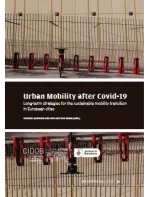Developing transition pathways for mobility in European cities – challenges and new approaches

Meeting the European Union’s 2050 climate-neutrality target will require a 90% reduction in transport-related greenhouse gas (GHG) emissions. A large proportion of these reductions will need to come from Europe’s city-regions, and urban mobility in Europe will need to change fundamentally as a result. The question for European municipalities is how they can pursue mobility planning that ensures GHG emissions decline at sufficient scale and speed to meet the EU’s 2030 and 2050 climate targets.
The European Commission’s current policy framework for supporting urban mobility transitions includes the Sustainable Urban Mobility Planning (SUMP) approach as one of its cornerstones, with the SUMP practitioner guidelines currently in their second iteration and EU funding for municipalities likely to become conditional on adherence to these planning principles. Based on our work within the H2020 SUMPPLUS project, we argue that new long-term planning approaches to developing transition pathways are needed that complement existing SUMP planning focused on a five- to ten-year time horizon (Smeds & Jones, 2020). In this chapter, we make reference to the cities of Barcelona and Stockholm as illustrative examples, based on conversations with representatives of the respective city governments during the webinar “Urban Mobility after COVID-19” hosted by CIDOB in April 2021.